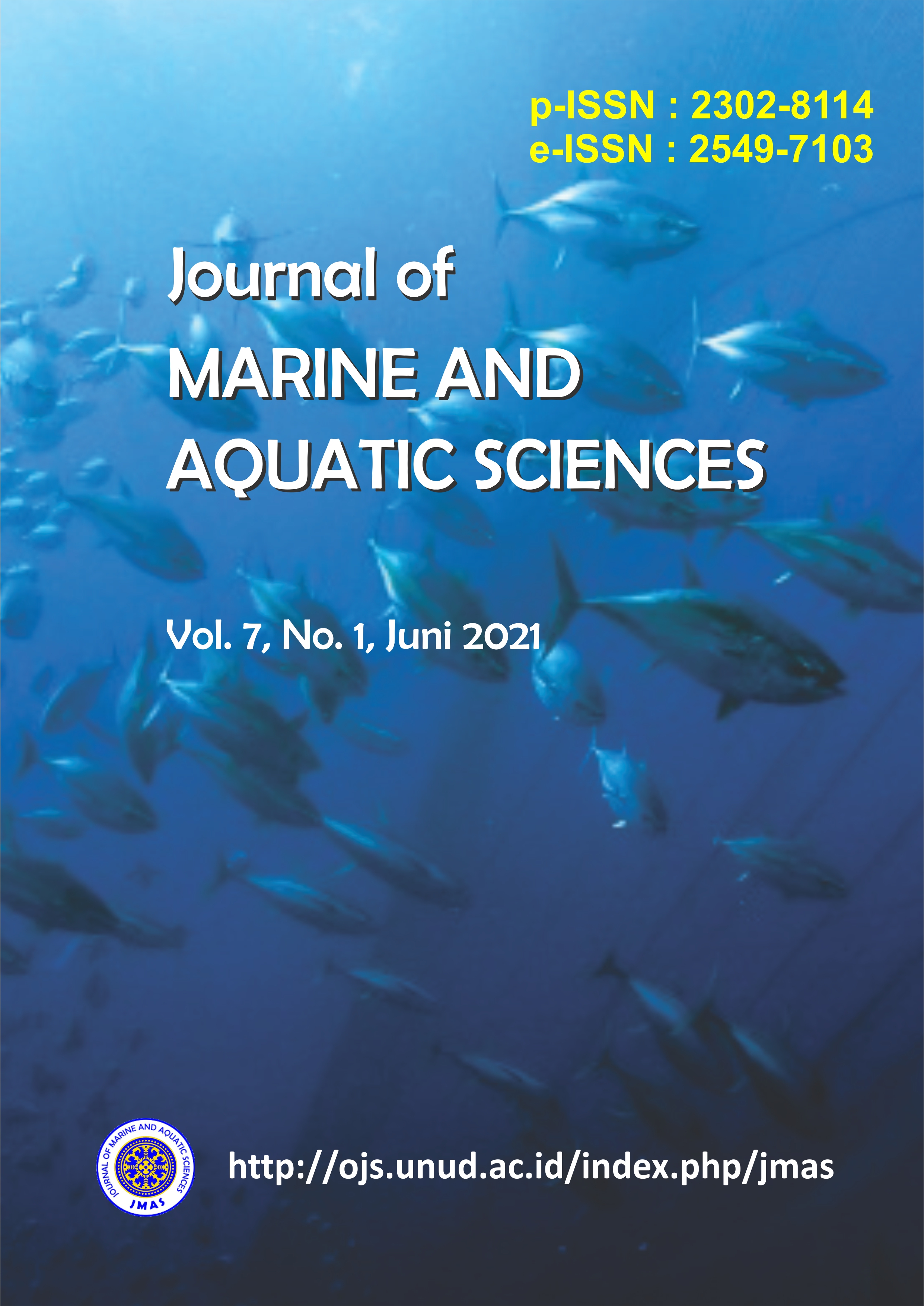Identifikasi Hiu yang Diperdagangkan di Bali Menggunakan Metode DNA Barcoding dan Analisis Filogenetik
Abstract
Sharks are one of the keys for ecosystems balance in the ocean. Sharks as top predators have an important role to maintain the stability of the food chain in the ocean. The loss of sharks will have a major impact on the marine ecosystem, so the presence of sharks in the ocean must be protected from extinction. However, there are some activities such as sharks hunting and trading going on because of the high demand of sharks processed products. Bali is one of the locations of shark fishing and trading activities. The problem is the trade-in sharks have gone through the finning process, leaving only the body parts or fins which resulted in the difficulty of morphological identification process. An alternative method that can be used if molecular identification cannot be done is DNA Barcoding. DNA Barcoding means identifying all the animal species with an effective molecular approach applied to identify species. The identification results of DNA Barcoding of shark’s trade in Bali shows that there are four species of sharks have been sold, which is hammerhead sharks (Sphyrna lewini), thresher sharks (Alopias pelagicus), big eye thresher shark (Alopias superliciosus), silky sharks (Carcharinus falciformis). These sharks registered in the IUCN red list, Sphyrna lewini classified as threatened species, while the others (Alopias pelagicus, Alopias superciliosus and Carcharinus falciformis) classified as vulnerable species. In the international trade regulations on CITES, these four species come under the Appendix II. In national regulations, Alopias pelagicus, Alopias superciliosus, Sphyrna lewini have been regulated by the Ministerial regulations, while for Carcharinus falciformis, there are no national regulations yet.
Downloads

This work is licensed under a Creative Commons Attribution 3.0 International License.
Copyright 2012 - 2023 Journal of Marine and Aquatic Sciences (JMAS)
Published by Fakultas Kelautan dan Perikanan Universitas Udayana, Denpasar, Bali, Indonesia
JMAS (p-ISSN 2302-8114; e-ISSN 2549-7103)


